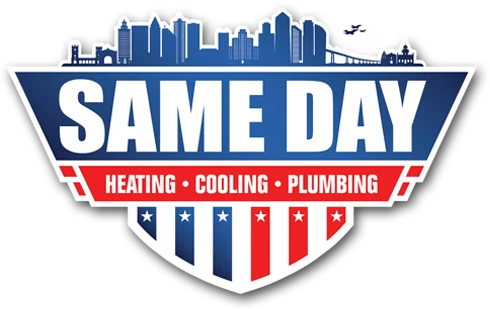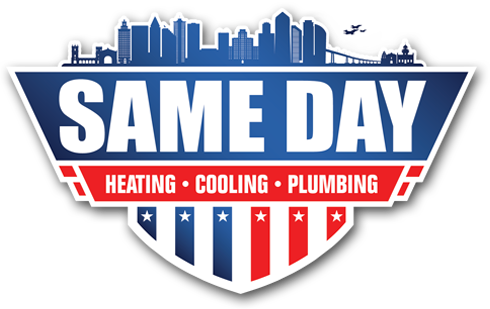How To Mount My Mini-Split System
Quick Summary: Mini-split systems offer versatile and energy-efficient heating and cooling options for homes. Common mounting methods include wall-mounted, ceiling-mounted, and floor-mounted units, each suited to different spaces. Wall-mounted mini-splits are the most common, while ceiling-mounted units are ideal for larger areas, and floor-mounted units are perfect for rooms with limited wall space. Proper installation of both indoor and outdoor units is essential for optimal performance, including ensuring proper airflow and clearance. Professional installation and regular maintenance are recommended to prevent issues and maximize efficiency, providing long-term comfort and customized heating solutions.
Mini-split systems have become a popular and efficient option for heating and cooling homes due to their energy-saving benefits and versatility. If you’re considering installing one, you may wonder, “How can my mini-split be mounted?” The process of mounting your mini-split is crucial for its optimal performance, quiet operation, and longevity. In this blog, we’ll explore different mounting options for mini-splits, including wall-mounted units, proper airflow considerations, and the importance of professional installation for a ductless mini-split system.
Understanding Mini-Split Systems
A mini-split system consists of two primary components: the outdoor unit and indoor units. The outdoor unit, also known as the condenser, houses the condenser coils, which are responsible for the heat exchange process. Inside, air handlers (indoor units) distribute the heated or cooled air to individual rooms. These versatile units are particularly effective for both efficient heating and cooling, making them an ideal solution for a variety of spaces, including larger spaces or multi-zone systems.
Wall-Mounted Mini-Splits: The Common Choice
The most common type of mini-split installation is wall-mounted mini-splits. These units are installed on a vertical wall, typically on an exterior wall for ease of connecting refrigerant lines to the outdoor condenser. Wall-mounted mini-splits are favored because they provide customized comfort, and they offer quiet operation while maintaining unobstructed airflow.
How Are Wall-Mounted Units Installed?
During the installation process, a hole is drilled through the wall for the refrigerant lines, electrical connections, and a condensate pump to drain any condensation that may build up in the system. Properly sealing the hole is critical to prevent drafts or moisture issues.
To ensure optimal performance, it’s essential that wall-mounted units are positioned in a place with proper clearance—typically, a minimum of a few feet of clearance is required both above and below the unit. This positioning allows for better proper airflow, which is crucial for maintaining efficient heating and cooling.
Ceiling-Mounted Mini-Splits: A Solution for Larger Spaces
Another option for mini-split mounting is ceiling-mounted or cassette mini-splits. This option is ideal for larger spacesor open-concept areas where a wall-mounted unit might not provide even coverage. Ceiling-mounted units are installed in the ceiling and can distribute air more evenly across the room.
Ceiling-Mounted Installation
Like wall-mounted units, ceiling-mounted mini-splits require careful planning. The indoor air handlers are recessed into the ceiling, with refrigerant lines running to the outdoor unit. Ensuring unobstructed airflow in the ceiling area is crucial for proper heat exchange and system efficiency. Installation of these units is more complex and requires the expertise of a licensed professional to avoid damaging the ceiling or electrical system.
Floor-Mounted Mini-Splits: A Compact Option
For those seeking a lower-profile solution, floor-mounted mini-splits may be the answer. These units sit near the floor, resembling a radiator in appearance. They are compact and fit well in rooms with limited wall space or sloped ceilings, such as attic rooms or basements.
Floor-Mounted Installation
Installing a floor-mounted mini-split requires careful consideration of the heat source and the placement of refrigerant lines. As with other mini-split types, ensuring unobstructed airflow is key. The unit should not be placed directly near obstacles, such as furniture or heavy drapes, to allow proper airflow throughout the room.
Outdoor Unit Placement
The placement of the outdoor unit is just as important as the indoor unit for optimal performance. The outdoor condenser should be placed in an area with feet of clearance around it, ensuring it’s not obstructed by plants, walls, or other objects. It’s also important to avoid placing the outdoor unit in areas with direct sunlight, as excess heat can reduce efficiency.
Considerations for Outdoor Unit Placement
In addition to avoiding direct sunlight, the outdoor condenser should be placed in a well-ventilated area where debris like leaves won’t clog the condenser coils. Proper placement of the outdoor unit will help ensure efficient heating and cooling and extend the life of the unit.
DIY Mini-Splits vs. Professional Installation
While DIY mini-splits may seem like a cost-effective option, it’s generally recommended to opt for professional installation. A licensed professional has the experience and tools—such as a torque wrench—to ensure that the refrigerant lines are securely connected, and the control wire and electrical connections are properly installed.
The Benefits of Professional Installation
Professional installation offers several advantages, including avoiding mistakes that can lead to heating issues or damage to your mini-split system. Additionally, licensed professionals can ensure the system is installed for peak efficiency and quiet operation. A qualified technician, like us here at Same Day, can also help with multi-zone systems, ensuring that each single air handler is installed correctly and positioned for maximum comfort.
Regular Maintenance for Mini-Splits
Once your mini-split is installed, regular maintenance is essential to keep it running smoothly and efficiently. Some common maintenance tasks include cleaning or replacing air filters, checking refrigerant levels, and ensuring there are no leaks in the system. Regular maintenance also helps prevent common problems like dirty filters, which can reduce the system’s efficiency and lead to higher energy bills.
Why You Need Professional Maintenance
While it may be tempting to handle basic maintenance yourself, it’s important to schedule professional maintenance for more in-depth tasks, such as checking the outdoor condenser or inspecting electrical components. A licensed technician can ensure your system is working properly, address any issues before they become serious, and help you avoid costly repairs down the line.
Customizing Your Mini-Split System
One of the biggest advantages of a mounted mini-split system is their ability to be customized to fit your home’s unique needs. Whether you need a multi-zone system for a larger home or a single-zone unit for a small room, mini-splits offer flexibility and control. You can pair your mini-split system with smart thermostats for more convenient control over the temperature in different areas of your home, further enhancing comfort and efficiency.
Overall, mounting your mini-split system properly is essential for ensuring optimal performance, energy efficiency, and comfort. Whether you choose a wall-mounted unit, ceiling-mounted system, or floor-mounted option, working with a licensed professional ensures that your mini-split is installed with proper airflow and clearance for long-term efficiency. With regular maintenance and professional care, your mini-split will provide customized comfort for years to come.

